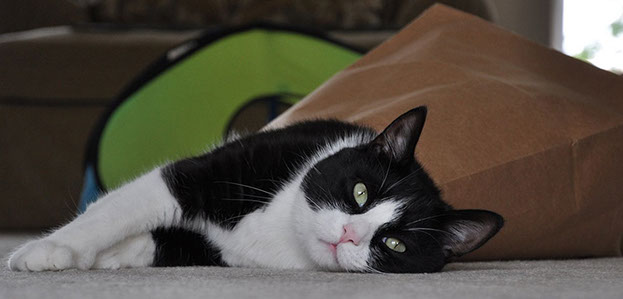Urine marking is a form of communication used by cats in the wild to make statements about what territory belongs to them, how long ago they were there, when other cats can expect them to return as well as information regarding mating. While domestic cats do not require this type of communication for survival, as cats in the wild do, they are still motivated by nature to use these communication skills. Urine marking is therefore not a litter box problem but, rather, a communication problem.
Often cats will urine mark if they are distressed. This helps them to keep unwanted individuals away and to create a familiar environment that they can feel secure in.
Reasons for urine marking may be:
• Your cat is an unneutered male. Female cats and neutered and spayed cats may urine
mark as well however unneutered males are more likely to do so.
• You have multiple cats in your home. As the number of cats in a household increases, the
more likely it is that at least one of them will urine mark.
• A change has occurred in the household. Changes that may cause a cat to become
distressed can range from bringing home a new or unusual object to doing renovations.
• Your cat is experiencing conflict with another cat in the house or cats that he or she sees
outside.
In order to address a urine marking problem it is important to first rule out medical problems. In the case that your veterinarian has determined that your cat doesn’t have a medical condition, consider the following options:
• Neuter or spay your cat.
• Close windows, blinds and doors to prevent your cat from seeing other neighborhood cats.
• Deter neighborhood cats from coming into your yard with a motion-detection device.
• Make sure to provide a sufficient number of litter boxes. Although marking is not a litter
box problem, too few litter boxes can contribute to urine marking if conflict arises over
litter box use. Ideally your home should have a litter box for every cat, plus one extra.
• Be sure that the litter boxes are in low-traffic area with at least two exit routes in order to
help your cat(s) avoid conflict with other pets in the home.
• Scoop and clean out litter boxes often, in order to reduce the scent of other cats. As well,
make sure to clean up all accidents outside of the litter box thoroughly with a product that
neutralizes pet odors.
• Provide multiple sources of food, water, scratching posts, perching areas and toys in order
to reduce the likelihood of conflict.
For more information on how to distinguish between urine marking and inappropriate elimination check out: Cat Behavior: Inappropriate Elimination vs. Urine Marking
Image by E Photos


